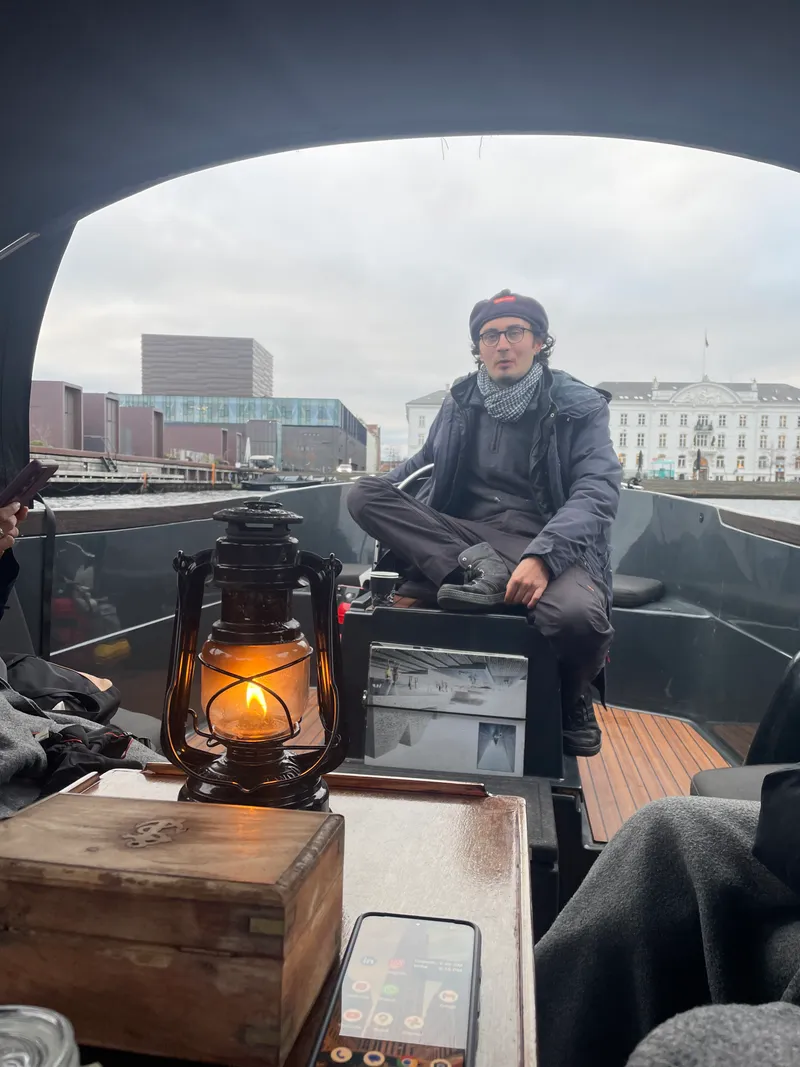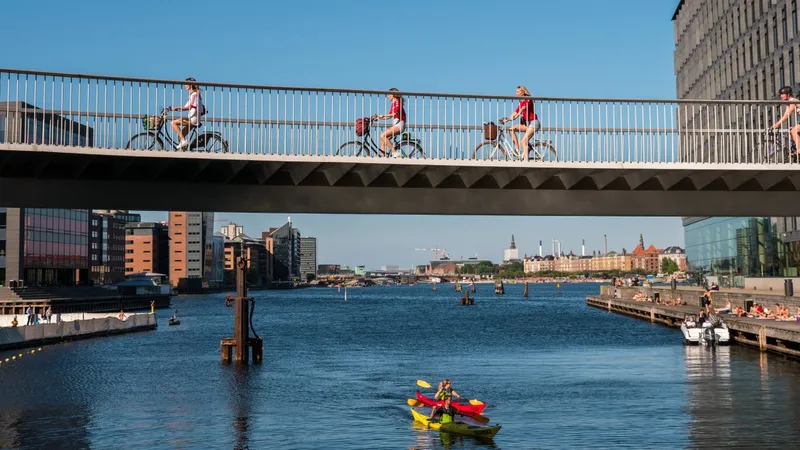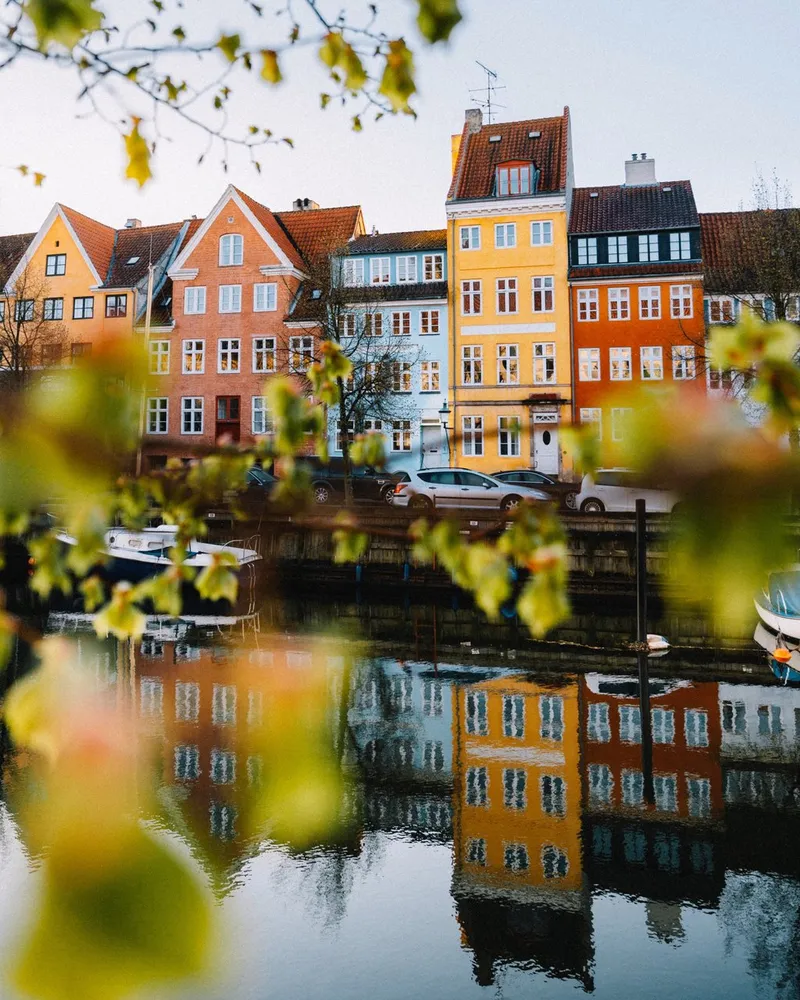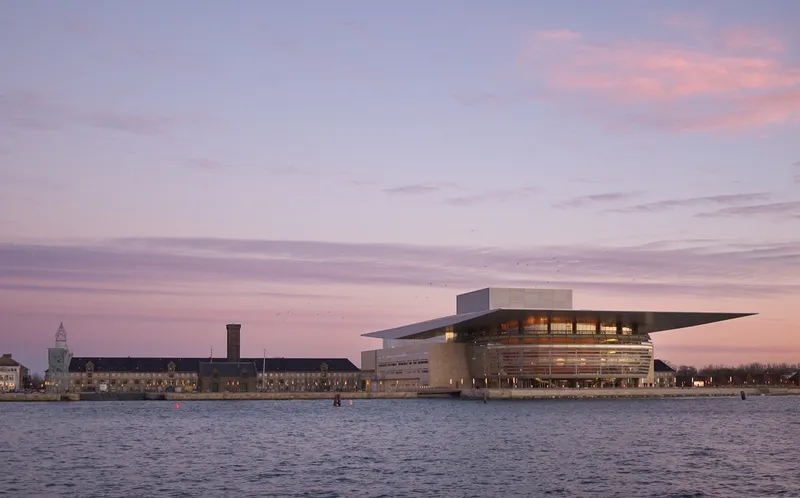Exploring Copenhagen's history and architecture through its canals
A boat ride through Copenhagen’s waterways offers an unusual vantage point to discover the Danish capital’s history, culture, and architecture.
I wrap the blanket around me and take a big glug of gløgg, the traditional Nordic mulled wine. The captain’s question on “a life-changing moment this year” is unanticipated. I’m not expecting deep thinking on a trip to Copenhagen at the fag end of the year; I’m looking forward to Christmas cheer and Danish hygge. But the captain steering the boat is gently persistent, making thoughtful contemplation necessary.
Over the next hour or so, the motley group on board ends up being nudged into conversation and sharing nuggets of personal information.
“We call it social sailing; it’s the anchor point for our boat tours. We focus on personal, social, and informative interactions while sailing in Copenhagen’s canals,” he tells the group, now cosy in heating blankets.

A captain who’s more host than sailor creates an atmosphere where people interact as they explore Copenhagen through its canals.
We set sail from Ofelia Plads, on the harbour front between Nyhavn and Amalienborg, and get a 360-degree view of the stunning architecture that spans almost all of Copenhagen’s important eras. The Skuespilhuset (Royal Danish Theatre), Opera House, and Admiral Hotel fade into the distance as we speed away.
Copenhagen's name reflects its history as a place of commerce—it comes from the Danish word København, derived from the Old Norse word Kaupmannahofn, which translates into “merchants' harbour”. Established as a Viking fishing village in the 10th century, Copenhagen became the capital of Denmark in the early 15th century.
Today, the buzzing capital combines modern architecture and culture with royal history, a delectable restaurant scene, and sustainable living. The city, situated on the islands of Zealand and Amager and separated from Malmö, Sweden, by the Øresund Strait, is criss-crossed by canals and waterways.
Hey Captain, founded in 2017 by Joel A Madsen and Casper Junge, aims to showcase the Danish capital’s history, culture, and modern life, through its canals. “We started sailing around with friends and family in our own boat, Diana, and everyone loved it so much that they suggested we should do it for a living,” Madsen says in an interview on YouTube. “When we first started, we wanted to create an alternative canal tour...take the feeling from our boat to many other boats,” he says.
“Every tour is different because every group of guests is different. We have grown to become a much bigger company but are still true to our original idea: of us all being friends on a boat,” Junge says. Since the beginning, Hey Captain has been rooted in social and personal relations, and it remains the “anchor point for all we are doing”.

Copenhageners love their bicycles and cycle in all types of weather and at all times of day. Photo: Wonderful Copenhagen
It’s surprising that the founders started a “social sailing” company in a country that’s typically among the top five of the world’s most-happiest countries. But not so surprising when one considers the fact that the number of lonely people in Denmark has grown considerably in the last decade, going from 8.3 % in 2017 to 12.4% in 2021.
Denmark has a population of close to 6 million. According to the Danskernes Sundhed survey, an estimated 600,000 people in Denmark feel lonely, with national loneliness costing society more than 7 billion Danish kroner per year.
Hey Captain aims to change this by creating an atmosphere where people are open and find a sense of togetherness. “We call this social sailing when we succeed,” Madsen says.
The boat tour company has adopted a scientific approach to its testing hypothesis versus control scenarios to evaluate the “nudges” that should be a part of the tour. “We feel we need more of this to solve many of the world’s challenges. We see ourselves as a social interaction lab; every day, we get better and better,” Junge says.

Copenhagen's architecture showcases bright and bold colours. Photo: Wonderful Copenhagen
Using smaller boats that allow a maximum of 12 people and a local, knowledgeable captain creates a more personalised experience. I find our captain more host than sailor for apart from steering the boat, he is focused on creating a space where fellow cruisers interact with each other and him, while pointing out myriad sights such as Amalienborg and Frederiks Kirke (Marmorkirken/Marble Church). He soon draws our attention to one of Copenhagen’s most famous draws, one that we almost missed amid our conversations.
The Little Mermaid, a bronze-and-granite sculpture that was brewer Carl Jacobsen’s gift to Copenhagen, was inspired by Hans Christian Andersen’s fairytale. The captain tells us that the mermaid, sculpted by Edvard Eriks, has been the victim of vandalism several times. “She lost her head twice, an arm once. She has had paint poured on her many times, but has been restored and continues to occupy her place at Langelinie Pier,” he says.
We sail on, soon copping a look at CopenHill (Amager Bakke), which showcases the best of Danish design and innovation. The waste-to-energy plant was conceptualised by Bjarke Ingels Group and rethinks how to handle urban waste and land resources by creating a structure that's welcomed by the people. The former power plant, now topped with a ski slope, climbing wall, hiking trail, and an urban recreation centre, is now a destination—and a step towards Copenhagen’s goal of becoming the world’s first carbon-neutral capital.
A break at Nordhavn lets us walk along the boardwalk of what was once an industrial neighbourhood. Today, the district has been redesigned as the world’s first five-minute city. Everything—offices, schools, shops, and cafes—is within walking or biking distance. The idea is to promote a car-free, sustainable lifestyle and make life easier.

Konditaget Lüders, a multistorey car park by JAJA Architects, transforms an infrastructural necessity into a public amenity. Photo: Wonderful Copenhagen
Buildings in Nordhavn have been designed to contribute to improving the quality of life. At Konditaget Lüders, a multistorey car park by JAJA Architects, a rooftop playground located 24 metres above sea level rejigs the idea of public space design. A car park where children play and adults work out while enjoying stunning views of the city—inherent innovation!
In the far distance is Refshaleøen, an island once home to one of the world's largest shipyards, and now a happening indie area with some of Denmark's best restaurants such as Noma and Alchemist.

A boat tour offers the chance to look at Copenhagen's architecture, including the Royal Danish Opera House. Photo: Wonderful Copenhagen
We get back into the boat, and settle down to enjoy the waterways with another glass of gløgg. Copenhagen’s many canals offer an unusual way to explore the Scandinavian capital. There is a sea of possibilities: a traditional canal cruise, a romantic gondola ride, a chance to captain an energy-powered boat, or an adventurous sail in a kayak. But nothing beats social sailing, which shuns the standard spiel and offers a local’s insights into Copenhagen.
(Feature image: Shutterstock)
Edited by Megha Reddy







